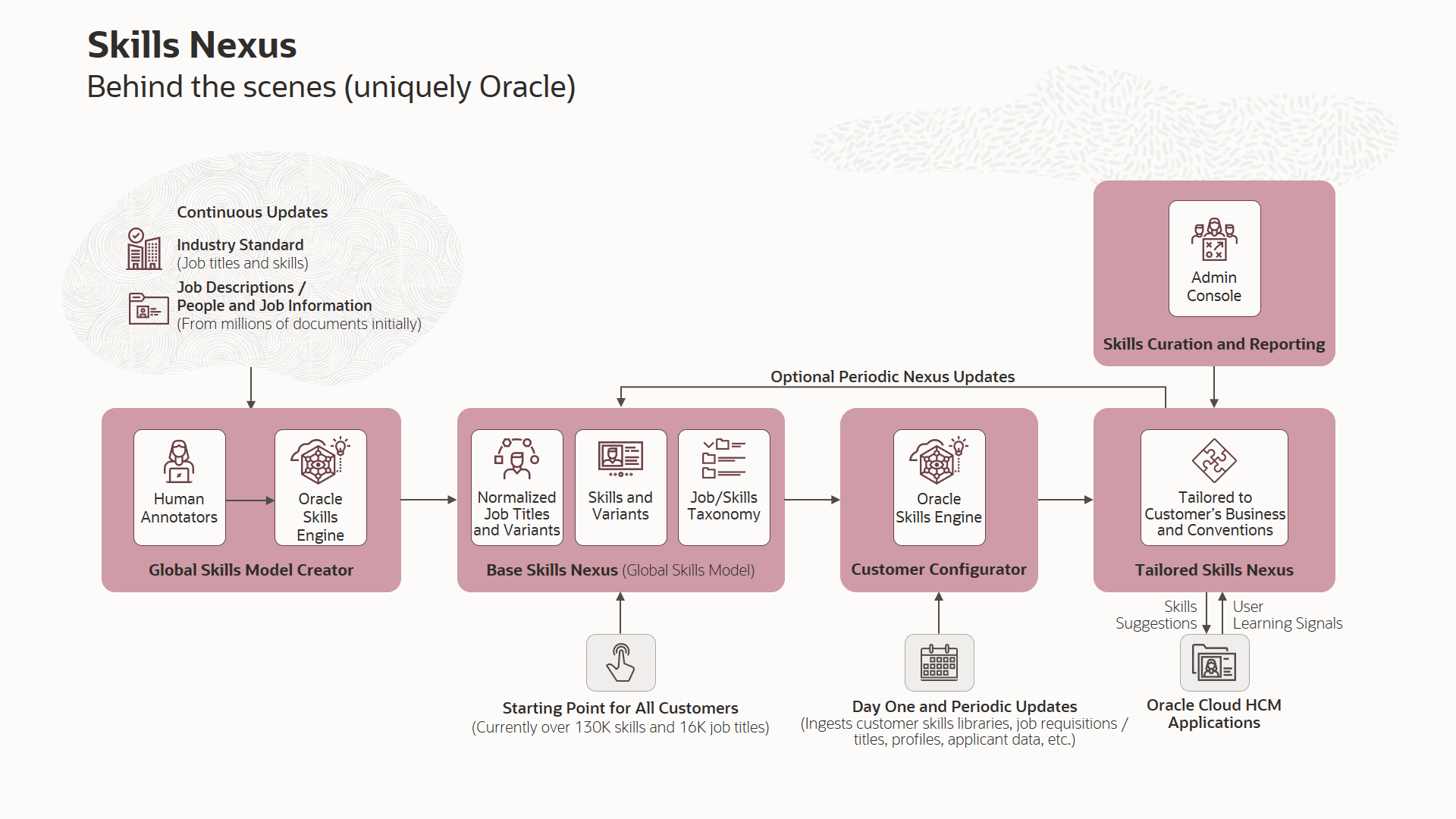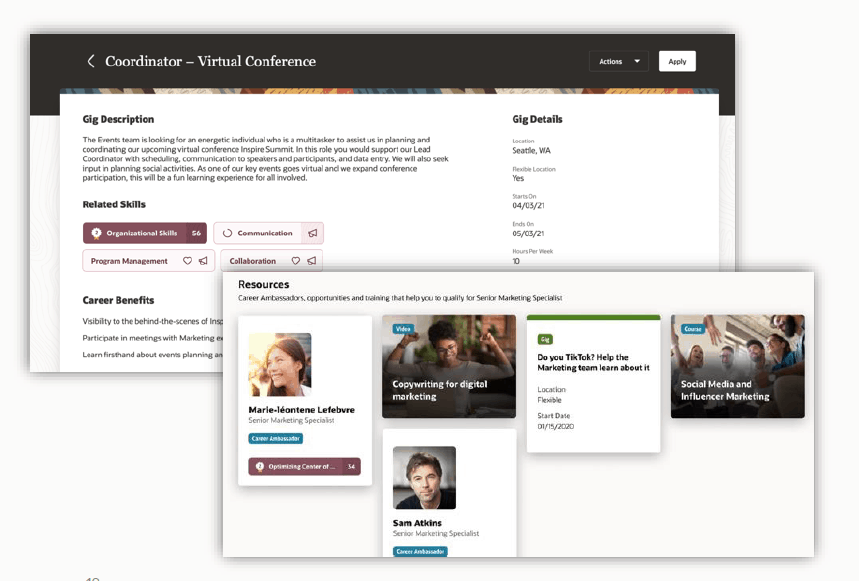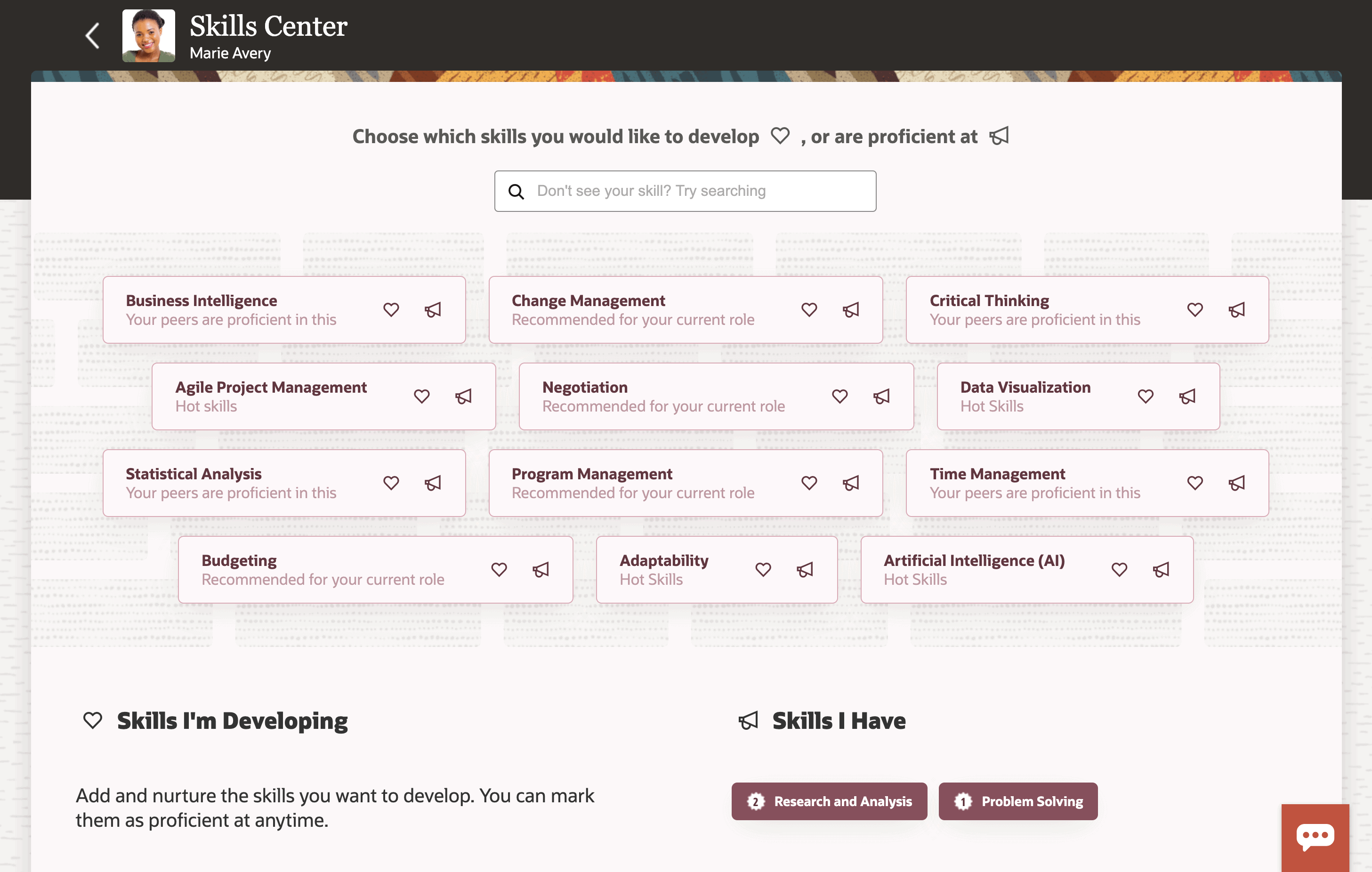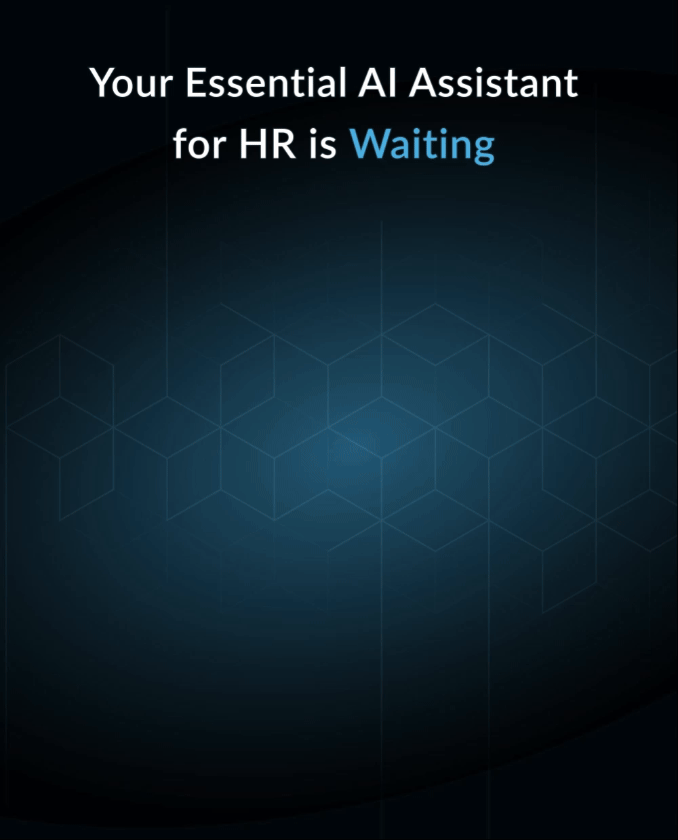Guess Who Just Joined The Skills Cloud Market? Oracle. And They’re Serious.
Last year I wrote about The War Of The Skills Clouds, and pointed out that there was a war for “SkillsTech” heating up. Well, it’s now red hot and Oracle has jumped into the pool. And they’re going to make a splash.
Skills Taxonomy software is now a huge market, and it’s even hotter as the economy heats up. As the podcast above describes, these are tools that try to “infer skills” from resumes and other artifacts online, match people to jobs and opportunities, categorize and discover learning, and even help people find mentors, coaches, and teams that fit.
How does all this work? The core engine is an AI-based matching technology, which now uses advanced analytics to not only figure out what topics a person might be expert in, but where they’ve worked, what projects they’ve worked on, and what other educational “signals” may infer a person’s capabilities.
The big players in this market today are Workday, Degreed, EdCast, Eightfold, and Gloat – but nearly every other vendor, from Fuel50 to Cornerstone to SAP, is also developing the same. More advanced “second generation” systems (like Eightfold.ai, Retrain.ai, EmPath, and FutureAI), are going much further – they’re looking at job clusters and job history to not only guess a person’s skills, but also intelligently recommend what career path or job move should be next.
Needless to say, all this technology has enormous potential. Every job seeker wants advice on what to learn and what next job to take. Every major corporation wants advice on who to promote, who to move into new positions, and how to build new capabilities. And every public sector leader, analyst, and consulting firm wants to develop solutions that reduce income inequality, balance labor market shortages, and help companies locate hard-to-find talent.
At its core, this is both an AI algorithm problem and also a “content problem.” In other words, it’s not enough to just “index” information and find the right signals, you also need lots and lots of data, because the labor market is filled with enormous pools of data.
Consider, for example, the problem Chevron is facing – how do we reskill, hire, or plan our energy-centric workforce so we can become experts at solar energy, batteries, wind energy and other new sources of revenue? How does Lockheed Martin, for example, make sure their people are learning the right new skills in intelligent drones or cybersecurity to stay ahead of their competitors? How does Bayer or Astra Zeneca make sure they are developing and recruiting scientists and genetic engineers that can invent the right next set of drugs? And how can Ericsson or Deutsche Telekom build the right tech, service, engineering, and business skills for the 5G revolution?
This problem is popping up everywhere. Not only are these tools used to simply make HR and L&D departments more relevant, they’re now strategic business tools being used to make major decisions. Should we “acqui-hire” ourselves into the next market? Can we redeploy a lot of our hard-working current people into these new professional roles and if so what is the right career pathway to get them there? How can we best advise our employees that their career in our company is worth sticking around for?
In the early days of this technology, these tools were used for “intelligent search.” Now, thanks to the vendors above and Microsoft Viva Topics, these tools can find experts you didn’t even know you had. They can identify people in accounting who should move into cyber roles. They can figure out which marketing people belong in sales. And they can help recruiters pinpoint hires who don’t look like the right fit but have precisely the adjacent skills you need to fill an important job.
Enter Oracle
Oracle has built SkillsTech into the entire HCM Platform. In the early days of this market, vendors like Degreed and EdCast built skills indexing tools to help find learning content. Then recruiting vendors like Avature and iCims added skills taxonomy tools to their candidate matching systems. Then vendors like Eightfold, Gloat, Fuel50, Tandemploy, and later Cornerstone started to use the tech for internal mobility and even to help find a mentor.
Well, Oracle is using SkillsTech for everything. Just as Workday uses the Workday Skills Cloud to inform and improve all aspects of Workday (800 customers have licensed it), Oracle Dynamic Skills is designed to permeate all areas of the Oracle Cloud HCM suite.
In many ways, Oracle, being the newest to market, had the opportunity to learn from others and build an integrated toolset.
Here are the basics.
Oracle Dynamic Skills has three major components:
Skills Nexus, which is an intelligent skills toolkit to define, curate, and organize your skills. It starts with a global skills inventory that is tailored to the organization based on its own HR data, job titles, competencies, and industry language. It then uses Oracle’s AI to normalize, curate, and identify skills on an ongoing basis. It can find job title variants, identify “unseen skills,” and recommend merging multiple variants of the same skill. (EdCast’s new SkillsDNA does similar things.)
 |
Skills Advisor, which is the matching technology that uses skills data to recommend learning, job moves, pay changes, or other important business processes.
 |
Skills Center, which is a place where employees can identify their skills gaps, proactively improve their skills, and manage their own career and work experience.
 |
Unlike standalone tools, Oracle tries to apply skills everywhere. The platform uses skills in the employee profile, candidate search, job requisitions, gigs, job profiles, and learning catalog.
Its matching is designed to find candidates for talent acquisition, recommend jobs for new candidates, find “similar jobs” for job search, find “similar candidates” for recruiters and then help employees find career paths, gig projects, learning mentors, and successors for their current or targeted job or role. It also recommends jobs and gigs through Oracle’s Opportunity Marketplace. And going forward the team is building all sorts of “skills-enabled” intelligent lists.
Impact On The Market
In many ways, this introduction launches SkillsTech into a well-established market. For many years vendors experimented with skills matching, inference, and categorization tools. Now that Oracle is in the market, all vendors have to keep up. In fact, one could argue that SkillsTech is as fundamental to HR software as mobile interfaces and analytics. Every vendor needs functionality in this area.
That’s not to say that all these tools are the same. The basic features include skills inference, taxonomy development, and tagging skills to profiles, jobs, and other talent programs. Beyond this there are many advanced features to consider:
- Does the system identify skills through “second-order effects?” For example, if a person completed a project with other people who had certain skills, is that experience reflected in their improved skills and exposure?
- Does the system understand vertical skills models, by ingesting skills taxonomies from third parties? The global world of skills is very complex and very fragmented: every job function from IT to marketing to finance to HR has its own skills models. And in most industries there are thousands of emerging skills and technologies to accommodate.
- How “smart” is the system about inferring levels of proficiency? This is a very new area and most vendors let the employee self-rate their skills. This only goes so far, as advanced systems (LinkedIn for example) have the advantage of millions of connections to “infer skill” in many different ways.
- How well does the vendor index content and jobs? Can it find skills information in videos? Can it identify the “level of skill” required or implied in a content object? These are advanced algorithms which a few vendors have started to focus on.
- What is the AI model being used? Is it word and pattern matching (often called term frequency-inverse document frequency)? Is it a more advanced algorithm like BERT sentence vectors? As we know from the advertising industry, methods to personalize content require a “whole person model” and lots of user segmentation. Most of these HR systems are just beginning to work this way.
- How well does the system understand “experiences” to derive skills? We want these systems to accurately reflect an employee’s credential, but not just be a “tag” that someone clicked. How well does the system affiliate actual experiences with skills? (This is what our Global HR Capability Project does.)
I give Oracle a lot of credit for pulling all this together. The company has deep experience in HR technology and this new platform is going to set a standard for an integrated SkillsTech system for the enterprise.
More Resources On This Topic
BurningGlass Acquires Emsi: The Leader In Skills And Jobs Data?
Oracle Cloud HCM Gaining Momentum: Perseverance Pays Off
The Business Impact Of HR Capabilities: It’s Far Bigger Than You Thought
